Rare Rides Icons: The History of Stutz, Stop and Go Fast (Part VII)

We pick up the Stutz story again today, as the super luxurious American brand went off to the automotive graveyard in the sky. Troubled by braking issues, dated product, and management keen to ignore the brand’s racing heritage, Stutz poured its limited development dollars onto delivery trucks and a rather sophisticated DOHC straight-eight engine. Both those developments were finished around the time of the Great Depression.
Unfortunately for Stutz, circa 1930 there was little demand for a new type of delivery truck, and really no demand at all for six-figure (adjusted) luxury cars. The company went bankrupt in 1937 and was liquidated fully in 1939. But the legendary name was not forgotten by certain people in Indianapolis who wore wide lapel suits.
First, a sidebar to explain the neoclassical automobile. At some point in the early Sixties and continuing on through the mid-Eighties, various small American car companies began a new type of coachbuilding. It was coachbuilding on common platforms, with exterior designs that could generally be considered exaggerated retro. Called “neoclassic,” various modern automobiles (often coupes) were turned into throwback cars that aggregated various styling elements from the Twenties and Thirties.
People alive in the Twenties and Thirties were still of car buying and driving age at the time, and a select subset of them yearned for the styling of the past. Flared wheel arches, sweeping rocker panels, free-standing headlamps, chromed exterior ductwork, and enormous spare tire covers. All these things fell within the realm of the neoclassical. Their manufacturers used every design cue that could be made out of steel, fiberglass panels, or recreated with bolt-on parts available from J.C. Whitney or wherever.
Key elements of a neoclassical car were the big upright grille, freestanding headlamps, and fenders separate from the bodywork. Most often these styling features were applied to things with two doors, and created a classic looking coupe with Sixties/Seventies personal luxury touches inside. Excalibur was the first company to go neoclassical in the Sixties, and others like Panther, Zimmer, and indeed Stutz weren’t too far behind.
One of the latter examples of a neoclassical was the ridiculously expensive Zimmer Quicksilver, or Pontiac Fiero SuperThrust Length Edition if you prefer. Neoclassicals died during the Eighties when those who could still recall the Twenties and Thirties died off and the personal luxury coupe era started its decline. We could have more neoclassical lecturing, but let’s move on to our topic of the day.
Stutz remained in a dormant state through the mid-Sixties, at which point it was acquired and reinvigorated at the hands of wealthy banking enthusiast James O’Donnell. O’Donnell gathered funds from various sources, and in 1968 was ready to reincorporate the former Stutz Motor Car Company of America into a new entity: Stutz Motor Car of America, Inc. Mr. O’Donnell had seen the promise of the neoclassical automobile courtesy of Excalibur and was inspired by some design work completed by former Chrysler associate Virgil Exner in 1963.
At that time Exner was freshly available to design as he wanted. He’d been let go from Chrysler after disagreements with management over the discontinuation of his ever-wackier styling themes, particularly where the Imperial was concerned. Exner incorporated a design company in his own name in 1963, and at the end of that year showed off a series of what he called “Revival Cars” for dead brands. The cars were presented in Esquire magazine and were sort of neoclassical takes on the looks of Duesenberg, Packard, Mercer, and Stutz.
Of those, only the Duesenberg initially went anywhere: There was an effort to rebirth the brand circa 1965. An actual prototype was constructed by Ghia of Italy in 1966 but was never put into production. The large sedan was built on top of a Chrysler Imperial chassis, probably because the D-body was the most heavy-duty production car available as a basis.
That is until O’Donnell started his new car company. Ghia was again contracted to build a prototype example of the Stutz Blackhawk, which in theory would be similar to the one Exner designed in 1963. However, the original ’63 Blackhawk didn’t carry through to the 1968 rework at O’Donnell’s behest. The 1963 design reflected a bumper that jutted far forward from the hood, thin A-pillars, and a spare tire presented on the rear deck inside some large buttresses.
What Exner reworked for the 1968 prototype and subsequent 1970 Blackhawk’s debut was more akin to a take on an over-styled Pontiac Grand Prix. A large chromed coffin nose leads the way, split down the middle, and backed in mesh. A red Stutz logo took the place of any hood ornament. Key to the front end look of a neoclassical, large circular headlamps stuck out on independent stalks, surrounded by chromed housings.
Smaller driving lamps flanked the headlamps, also on stalks. Quad independent lamps meant the Blackhawk’s front end had a lot of visual confusion to it. All front lighting was mounted on an extension of the bumper. The bumper had its own chrome lip that met with the grille surround in the middle. The overall front-end look with regard to the lighting was not all that different from the setup on the 1961 Imperial. Exner was pretty stuck on that idea.
Long front fenders flowed down from the A-pillar and extended past where they technically should have ended. There was a pointed overhang at both front corners, as the fender acted as a small roof over the driving lamps. (Worth noting, the driving lamps were absent on some examples, replaced by lamps under the bumper.) A chrome trim strip began at the outside edge of the grille and wrapped around the pointed fender. Additional chrome trim was found in the middle of the window, which was split into two pieces – a feature that existed only in 1971.
The chrome around the front overhangs headed down along the fender and continued to where it met the middle portion of the rear tire. At the front crease of the door, the chrome extended outward as a new character line grew to the rear tire. From there it bent upward around the rear wheel wells, and on to the sloped rear end.
The effect of the chrome strip was to give the appearance of separate fenders, as that particular cue of neoclassical was not physically present on the Blackhawk. One feature that did make the final design cut was a large chrome exhaust tube that exited the lower front fender on either side and extended under the rocker panel. Said exhaust was sometimes functional, other times not. Some examples also reflected dual chrome exhausts that exited from the rear end.
The chrome trim along the flanks drew the eye along the Blackhawk and distracted from the unusual door handle that was chrome and rear-hinged. It also distracted from the super formal roof, which was painted rather than covered in vinyl on the Blackhawk. A thick B-pillar wrapped around to a shrunken rear window. Beneath that window was the very sloped rear end, with an unusual trunk lid formed around an exposed rear tire. The tire placement was one typically covered by a continental kit, but the rubber was left exposed for the sake of visual interest and sportiness. The wheels on all five tires were a five-spoke slot alloy design that was unique to the Stutz.
The aforementioned character line chrome continued at the rear of the Blackhawk and extended around the tire to form a complete perimeter loop. Rear fenders implemented overhangs that mirrored the front and came to a rounded point. Unusually, the Blackhawk had no bumper: The lower portion of the rear fenders ended in a chrome cap on either side, with an integrated red parking lamp. Brake lamps were via simple circular red and amber units much like on the Lancia Stratos. Reverse lamps looked like an afterthought and were simple clear units fastened below either side of the exposed rear tire.
The Exner design debuted in January of 1970 at the Waldorf Astoria hotel in New York City. Unlike the concept that was constructed by Ghia, the production Blackhawk was initially built by Carrozzeria Padane. Panels were handmade, and the entire body was built of a thick, heavy-gauge steel. The artisans at Padane applied between 18 and 22 coats of paint to the Blackhawk for a superior finish. Each coat was hand-rubbed. Painting each Blackhawk took about six weeks.
The coupe spanned over 19 feet long once the body panels of the grandiose Exner design were applied. Even though it had a custom body, the resemblance to a Grand Prix was not a coincidence: When the Blackhawk debuted, it rode on the mid-size rear-drive G-body platform of the 1969 to 1972 Grand Prix. For reference, the Stutz with its graceful design was about a foot and a half longer than the Grand Prix.
Much like Exner’s later works at Chrysler, the Blackhawk’s looks were a bit extreme. But they fit into the neoclassical design trend just fine and did so in an accessible way with common GM underpinnings. Next time we’ll step inside the Blackhawk and take a look at the intensely luxurious interior, and learn about the big power underneath.
[Images: Stutz, Ghia, YouTube]

Interested in lots of cars and their various historical contexts. Started writing articles for TTAC in late 2016, when my first posts were QOTDs. From there I started a few new series like Rare Rides, Buy/Drive/Burn, Abandoned History, and most recently Rare Rides Icons. Operating from a home base in Cincinnati, Ohio, a relative auto journalist dead zone. Many of my articles are prompted by something I'll see on social media that sparks my interest and causes me to research. Finding articles and information from the early days of the internet and beyond that covers the little details lost to time: trim packages, color and wheel choices, interior fabrics. Beyond those, I'm fascinated by automotive industry experiments, both failures and successes. Lately I've taken an interest in AI, and generating "what if" type images for car models long dead. Reincarnating a modern Toyota Paseo, Lincoln Mark IX, or Isuzu Trooper through a text prompt is fun. Fun to post them on Twitter too, and watch people overreact. To that end, the social media I use most is Twitter, @CoreyLewis86. I also contribute pieces for Forbes Wheels and Forbes Home.
More by Corey Lewis
Latest Car Reviews
Read moreLatest Product Reviews
Read moreRecent Comments
- Turbo Is Black Magic My wife had one of these back in 06, did a ton of work to it… supercharger, full exhaust, full suspension.. it was a blast to drive even though it was still hilariously slow. Great for drive in nights, open the hatch fold the seats flat and just relax.Also this thing is a great example of how far we have come in crash safety even since just 2005… go look at these old crash tests now and I cringe at what a modern electric tank would do to this thing.
- MaintenanceCosts Whenever the topic of the xB comes up…Me: "The style is fun. The combination of the box shape and the aggressive detailing is very JDM."Wife: "Those are ghetto."Me: "They're smaller than a Corolla outside and have the space of a RAV4 inside."Wife: "Those are ghetto."Me: "They're kind of fun to drive with a stick."Wife: "Those are ghetto."It's one of a few cars (including its fellow box, the Ford Flex) on which we will just never see eye to eye.
- Oberkanone The alternative is a more expensive SUV. Yes, it will be missed.
- Ajla I did like this one.
- Zerofoo No, I won't miss this Chevrolet Malibu. It's a completely forgettable car. Who in their right mind would choose this over a V8 powered charger at the rental counter? Even the V6 charger is a far better drive.




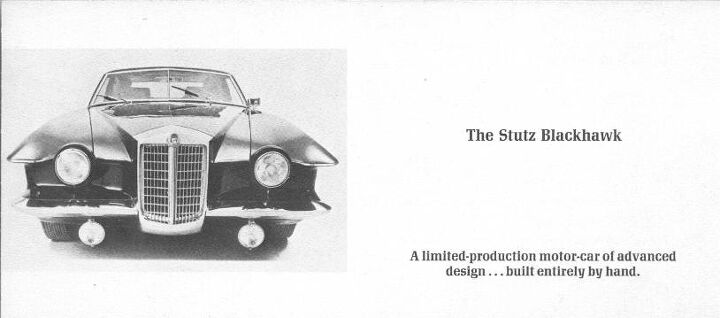





















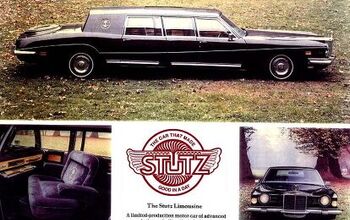

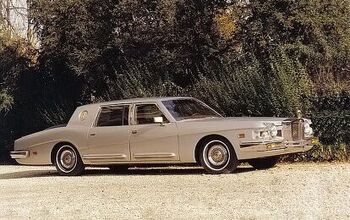
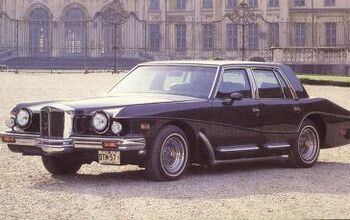
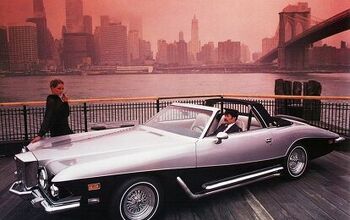










Comments
Join the conversation
DOHC V8? Don't you mean straight 8?
At last, we now know the answer to *What if, in 1973, George Barris had been asked to customize a new Pontiac Grand Prix for someone with more money than taste?*